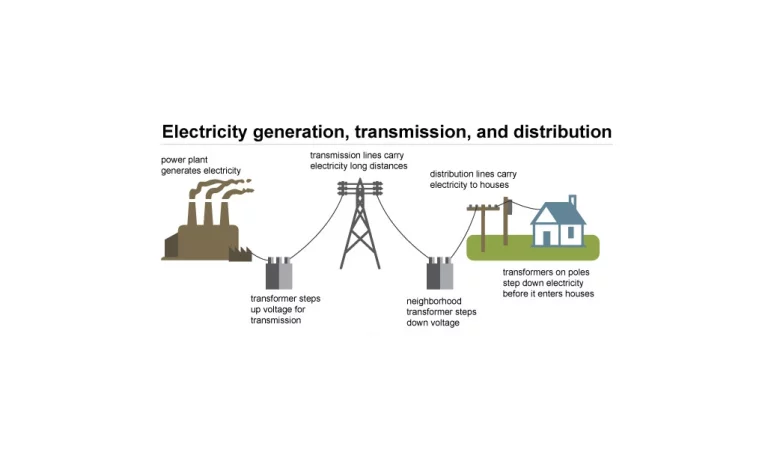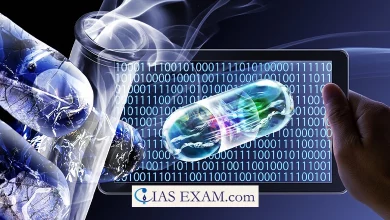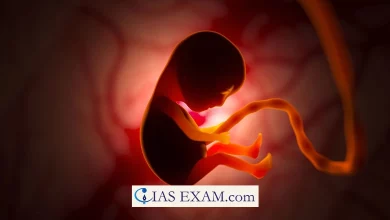How is Electricity transmitted?
Syllabus: Science and Technology[GS Paper-2]

Context: Energy exists in many forms, like light, sound, heat, etc., power and power transmission also exist in many forms. However, electric power transmission is more complicated because of the multiple phases of electric current, and factors like voltage, impedance, frequency, etc.
About Power supply:
- The power supply system consists of three main components, namely generation, transmission, and distribution.
- The generation of electricity occurs both at large-scale power plants and smaller renewable-energy installations.
- Once generated, the electricity is then transmitted through an extensive network that includes stations, substations, switches, overhead and underground cables, as well as transformers and various other elements.
- This network ensures the efficient movement of electricity from its source to its destination.
- Ultimately, the electricity is distributed to consumers in a standardised manner, tailored to meet the specific requirements of different machines and applications.
What is the process of transmitting electricity?
- In conductors, the efficiency of transmitting electricity is higher when the current is lower and the voltage is higher.
- This is because the energy loss during transmission increases exponentially with the current, while the voltage change is directly proportional to the decrease in current.
- In other words, if the voltage is increased by five units, the current will decrease by five units, resulting in a reduction of energy loss by 25 units.
- Transformers are used to raise the voltage and lower the current when sending power through transmission lines, and vice versa when supplying power to consumers.
- The cables that transfer electricity have resistance, causing some energy to be lost.
- The thickness of the cable can be adjusted to minimise energy loss, but this increases the cost.
- Therefore, when the material for the cable is expensive, thinner cables are used.
- The cost of transmission decreases as the distance of transmission increases.
- The use of alternating current (AC) complicates these factors, but AC can be modified more easily and has higher transmission efficiency compared to direct current (DC).
- However, higher AC frequency increases resistance in the material. Engineers analyse all of these factors to determine the amount of electrical energy lost during transmission.
Process of power transmission:
- In a three-phase AC circuit, each wire carries AC current in a different phase. The wires are connected to transformers at the power station, which increase their voltage.
- They are then suspended from transmission towers to travel long distances. Insulators on the wires remove excess current during surges, and circuit-breakers disconnect the circuit if there is too much current.
- The towers are grounded and have arresters to protect against voltage spikes caused by lightning.
- Dampers prevent vibrations in the wires from affecting the stability of the towers. Switches are used to control the flow of current and redirect it between different lines.
Functioning of grids:
- Transmission is positioned between production and distribution in a national grid. It is responsible for managing the specifics of power production from different sources and locations, as well as how and where that power is used.
- This includes accounting for the continuous energy production of sources like coal-fired or nuclear reactors, as well as the intermittent nature of renewable energy sources.
- Storage facilities are also incorporated into grids to store excess energy and release it during times of shortage.
- Additionally, grids must respond to failures in the network, regulate voltage based on demand, control AC frequency, and improve power factor.
Conclusion
A wide-area synchronous grid occurs when all generators connected to a grid produce AC current at the same frequency. India’s national grid is an example of this. While these grids have lower power costs, precautions need to be taken to avoid widespread power failures.
Source: TH
Practice question:
Q. In the context of electricity, what does “AT and C” loss refer to?
- Amperage, Transmission, and Capacitance Loss
- Alternating and Continuous Loss
- Aggregate Technical and Commercial Loss
- Atomic Theory and Conductivity Loss





.png)



